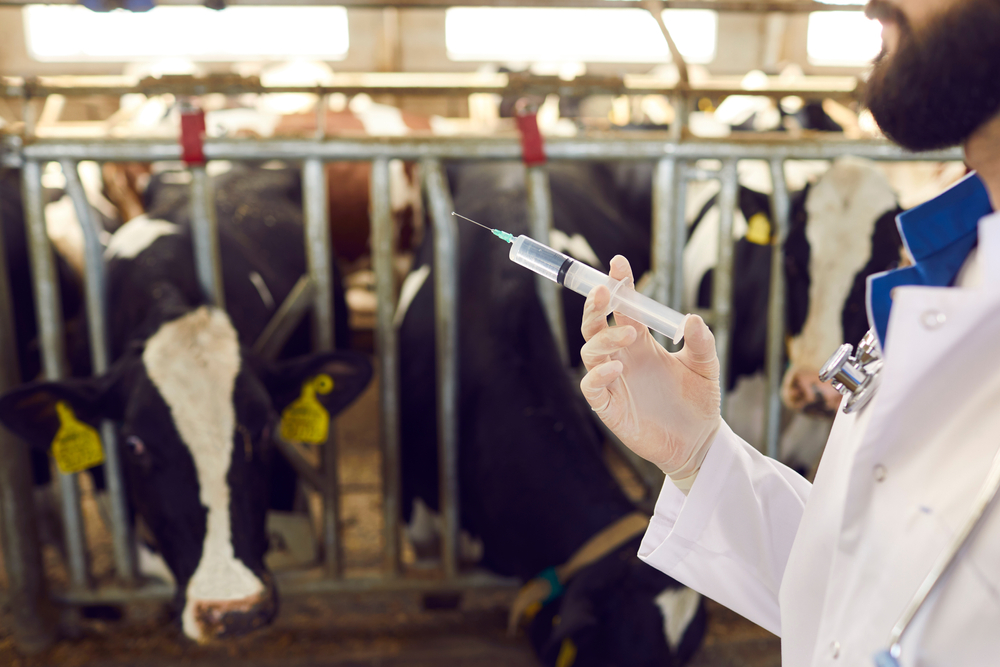A new report by the World Animal Health Organization (WOAH) reveals that antibiotic use in animals has declined globally by 5% between 2020 and 2022.
This promising trend is highlighted in the 9th edition of the antibiotics intended for use in animal (AMU) reports, reflecting improved perceptions and early successes when tackling overuse of antibiotics in agriculture. However, experts have warned that the fight against antibiotic resistance (AMR) is not over.
The latest AMU report covers 71% of the world’s animal biomass and includes data from 157 countries, of which 111 submitted detailed quantitative reports. This comprehensive global participation provides new insights into how and where antibiotics are being used and where further reform is urgently needed.
From promoting growth to global threats
For decades, antibiotics have been used on a daily basis not only to treat infections, but also to promote animal growth. This is currently widely criticized.
Scientific consensus shows that such misuse contributes significantly to the development of AMR. AMR evolves to resist treatment and is not effective in critical drugs.
The international standards of WOAH explicitly discourage the use of antibiotics to promote growth. However, the latest data reveals that 22% of reporting countries continue this outdated practice.
Surprisingly, 7% of these countries use antibiotics classified by the WHO, including Colistin and Enrofloxacin, as “a very important priority for human medicine.”
Regional trends and species-specific data
The ninth AMU report offers a more detailed view than ever before. For the first time, WOAH conducted another Middle Eastern analysis to distinguish between terrestrial and aquatic food-producing animals.
Overall antibiotic use decreased from 102 mg/kg to animal biomass of 97 mg/kg, but regional variation was significant.
Reductions were reported between 2020 and 2022.
Africa: -20% Europe: -23% America: -4% Asia and Pacific: -2%
However, there was a 43% increase in the Middle East. Despite this spike, the region accounts for only 0.3% of the world’s animal biomass and only 0.04% of reported antibacterial loads, suggesting that it has a minimal effect on the overall trend.
The urgency of fighting AMR
Antibiotic resistance is the growth of global health threats. In 2022 alone, AMR was directly responsible for the deaths of 1.15 million people.
The forecast shows that this figure could rise dramatically, with an estimated 38.5 million lives being lost by 2050 if the current trend continues. Vulnerable groups in low- and middle-income countries, especially in lower- and middle-income countries, face the most significant risks.
The root of this problem lies in misuse, including excessive reliance on antibiotics to increase animal productivity rather than treating infectious diseases.
AMR not only puts animal health and food safety at risk, but also impairs the effectiveness of human life-saving treatments.
The momentum for change is being built. In September 2024, UN member states adopted a political declaration on antibiotic resistance, pledged to reduce the use of antibiotics in agriculture and improve surveillance and reporting systems.
As part of this commitment, countries have agreed to invest in infection prevention, control measures and data-driven solutions.
Woah’s global database, Animuse plays a central role in these efforts by collecting and disseminating national data on antibiotic use.
This data allows policymakers to assess trends, identify areas of question and make informed decisions.
Prevention is the best medicine
The path ahead is clear. Reducing antibiotic use starts with preventive care such as better animal care, strict biosecurity, and vaccination.
These practices can minimize the need for antibiotics while increasing animal welfare and farm productivity.
Woah continues to advocate for one health approach, recognizing the interconnectedness of human, animal and environmental health.
The organization advocates for full compliance with international guidelines to ensure stronger national surveillance systems, better data collection, and responsible use of antibiotics.
Calling for collective action
The global decline in antibiotic use in animals is a step in the right direction, but the journey to eliminate antibiotic resistance is never over. Continuous cooperation between governments, farmers, veterinarians and international organizations is essential.
Only a coordinated science-based strategy can protect both animal and human health from the increased threat of antibiotic resistance and ensure that antibiotic use in agriculture remains responsible, transparent and sustainable.
Source link

